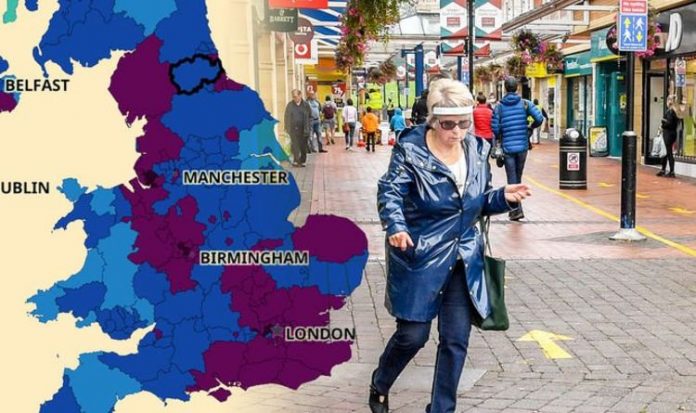The coronavirus is still a huge problem in the UK as the Government tries to drive down infection rates through lockdown and other restrictions. On Friday, the UK recorded 40,261 new cases of Covid and 1,401 new deaths within 28 days of a positive test result. Professor Chris Whitty said cases may still be increasing in some areas while Prime Minister Boris Johnson said the country is still at an “extremely precarious” point.
He told the Downing Street conference on Friday: “I must tell you this afternoon that we have been informed today that, in addition to spreading more quickly, it also now appears that there is some evidence that the new variant – the variant that was first identified in London and the South East – may be associated with a higher degree of mortality, and I’m going to ask Patrick in a minute to say a bit more about that.
“Because it is largely the impact of this new variant that means the NHS is under such intense pressure, with another 40,261 positive cases since yesterday.
“We have 38,562 Covid patients now in hospital, that’s 78 per cent higher than the first peak in April and, tragically, there have been a further 1,401 deaths.
“So, it is more important than ever that we all remain vigilant in following the rules and that we stay at home, protect the NHS and thereby save lives.”
READ MORE: Oxford vaccine boss urges Brits to take WHICHEVER jab they can
The areas with rising infection rates
There are 12 areas within England’s local authorities that are still seeing Covid cases rise, while some regions have reported a decline.
Data from Public Health England shows case rates were down in 281 local areas in the seven days to January 18, compared to the week before.
But unfortunately, 32 areas are now seeing cases rise again, up from 14 just three days before the period of time covered by the data.
Wallsall in the Midlands has 741.6 cases per 100,000 people, up from 737.4 the week before, while Redditch and Worcester are recording 717.8 and 687.6, respectively, up from 591.1 and 676.7.
Dudley, also in the Midlands, has seen cases rise from 682.5 out of every 100,000 people from 647.4, and Hyndburn has seen the toll soar from 668.8 to 688.5.
Next is South Staffordshire which has seen an increase from 576.3 in every 100,000 citizens to 592.3.
Leicester has seen an increase from 531.3 to 569.1, while Coventry rose from 506.8 to 510.6 and Bolsover in Derbyshire saw cases rise from 440.7 to 510.2.
Solihull has seen cases go from 502.8 to 508.8, while Preston and Middlesbrough have also seen a sharp rise.
Preston recorded 503 cases in every 100,000 up from 484.9, and Middlesbrough saw the rate soar from 471.7 to 501.5.
Knowsley in Merseyside continues to have the highest rate in England, with 1,531 new cases recorded in the seven days to January 18, the equivalent of 1,014.8 cases per 100,000 people – down from 1,331.7 cases in the seven days to January 11.
Slough in Berkshire currently has the second-highest rate, down from 1,061.9 to 936.9 with 1,401 new cases.
Sandwell in the West Midlands is in third place, down from 923.7 to 898.5, recording 2,951 new cases in the area alone.







